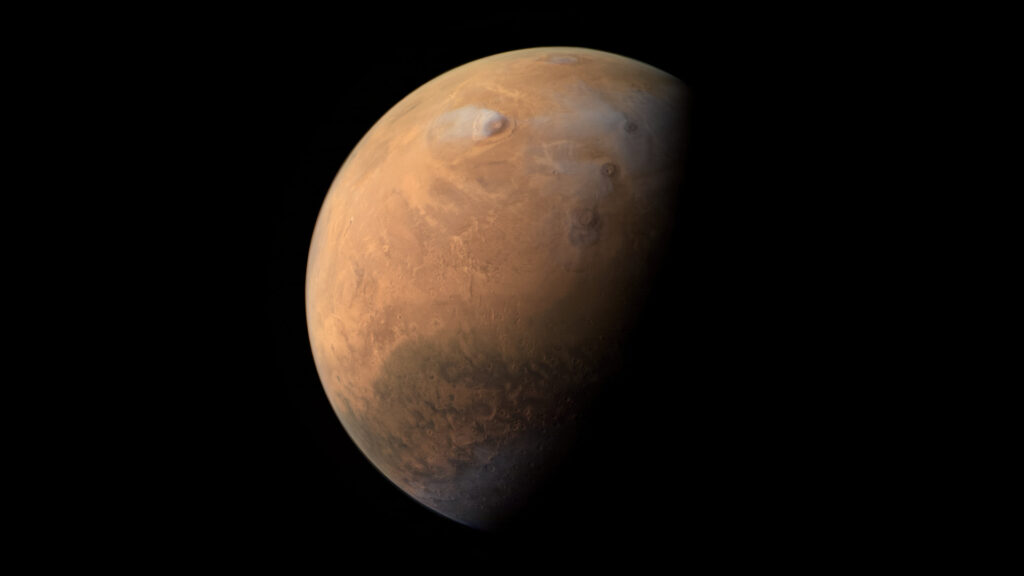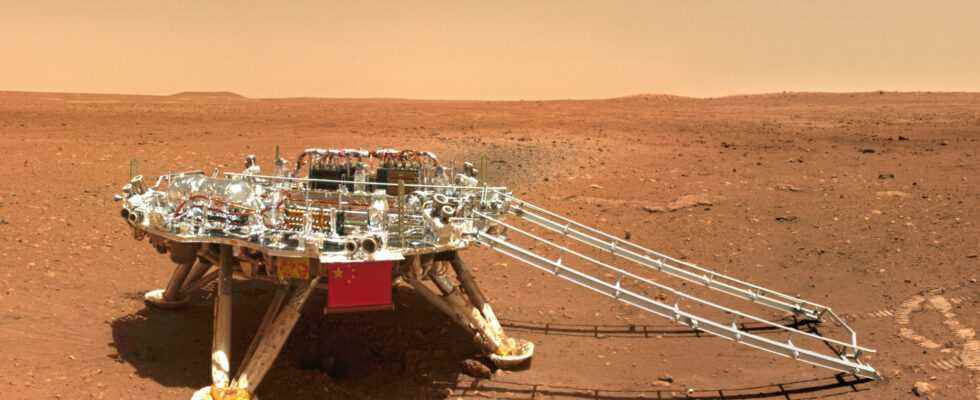China has an opportunity to overtake the United States in about ten years. She thinks she can repatriate samples from the surface of Mars as soon as 2031, while the United States is now aiming for 2033 with its European partners.
The misfortunes of some create the opportunities of others. The space competition is no exception: in the race to the planet Mars, China may have an opening to toast the politeness of the United States and Europe. Not for a manned mission to the red planet — that’s still too far off a prospect — but in the repatriation of samples.
China aims to return samples in 2031
A recent presentation held in China indeed shows that the Middle Kingdom possibly has the opportunity to complete this challenge before its great strategic rival. It is in any case what she imagines on paper: the main designer of the Tianwen-1 mission, which consisted in depositing a rover on Mars, presented a more compact schedule.
In the spirit of the Chinese space agency, the launch of all the machines necessary for the proper execution of the mission would take place during 2028 (two scenarios coexist: either a first launch in March and the other in November, or both in November and December). The return of the samples would take place in July 2031, concluding with an airdrop of the cargo.

This return date is not insignificant. It should be read in the light of the West’s own ambitions in this field, since the United States and Europe have a similar project: send the necessary equipment to Mars at the end of the decade to scratch a little from the surface, package everything in a well-sealed environment and ship the package to Earth.
This program, which mobilizes the American space agency and its counterpart on the Old Continent, is based on a revised schedule. While there was talk a few months ago of a sequence that should also be completed during 2031, a new deadline has been set for the spring of 2022. The arrival of the samples will not take place before 2033.
Space race between great powers
The China National Space Administration (CNSA) cannot ignore announcements made by other major space agencies. And we know that its program is very vigorous: asteroid deflection test, future moon landing in cooperation with Russia, finalization of its station in orbit around the Earth, longer and longer crew stays, giant astronomical telescope…
While the United States retains an undeniable lead and experience in the space race, the gap with China has narrowed significantly. Beijing can even boast of having achieved something unique: landing on the far side of the Moon before anyone else. Certainly, it would have been on Washington’s ropes, but never such a mission was ordered.

Access to the planet Mars depends on complex celestial mechanics. Put simply, mission opportunities arise every two years, when the trajectories of the Red Planet and Earth are optimal to allow for reduced travel time. To miss the mark of 2031, the date initially planned, is to condemn oneself to having to wait until 2033.
The update of the future stages of the joint project between the two shores of the Atlantic therefore also implies a revision of the departure date of the gear that will be placed upstream, namely the Sample Retrieval Lander, which is the responsibility of the NASA. This one would leave in 2028 and no longer in 2026. As for the Earth Return Orbiter of the European Space Agency, it is still 2027.
The feasibility of the Chinese roadmap obviously remains to be demonstrated, because for the moment it is only a few dates thrown on a PowerPoint presentation. It is in 2028, when the Chinese missions will take off to Mars, that we will be able to see if China has been faster than the USA and Europe in transporting samples from Mars to Earth.

